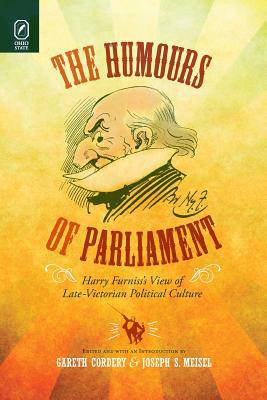
Je cadeautjes zeker op tijd in huis hebben voor de feestdagen? Kom langs in onze winkels en vind het perfecte geschenk!
- Afhalen na 1 uur in een winkel met voorraad
- Gratis thuislevering in België vanaf € 30
- Ruim aanbod met 7 miljoen producten
Je cadeautjes zeker op tijd in huis hebben voor de feestdagen? Kom langs in onze winkels en vind het perfecte geschenk!
- Afhalen na 1 uur in een winkel met voorraad
- Gratis thuislevering in België vanaf € 30
- Ruim aanbod met 7 miljoen producten
Zoeken
€ 60,95
+ 121 punten
Omschrijving
Harry Furniss (1854-1925), a leading contributor to Punch and other important illustrated magazines, was arguably the most significant political caricaturist and illustrator of the late Victorian and Edwardian eras. He was widely celebrated in his time, and his cartoons helped to define the political world in the public mind. The Humours of Parliament was Furniss's hugely successful illustrated lecture that he staged throughout the U.K., North America, and Australia during the 1890s. Entertaining his audiences with anecdotes, mimicry, and jokes-along with the spectacle of more than 100 magic lantern slides-Furniss gave his audiences an insider's view of the mysterious workings of Parliament and the leading political personalities of the day, such as Gladstone, Balfour, and Chamberlain. Reproducing some 150 images drawn from Furniss's extensive graphic work, The Humours of Parliament: Harry Furniss's View of Late-Victorian Political Culture, edited and with an introduction by Gareth Cordery and Joseph S. Meisel, presents Furniss's unpublished lecture text for the first time. The extensive introduction places the show in its biographical, political, and performative contexts. Cordery and Meisel's volume therefore both documents a pivotal moment in British political and social history and provides a rare case study of an important yet little studied nineteenth-century performance genre: the illustrated platform lecture.
Specificaties
Betrokkenen
- Auteur(s):
- Uitgeverij:
Inhoud
- Aantal bladzijden:
- 350
- Taal:
- Engels
- Reeks:
Eigenschappen
- Productcode (EAN):
- 9780814252772
- Verschijningsdatum:
- 18/11/2015
- Uitvoering:
- Paperback
- Formaat:
- Trade paperback (VS)
- Afmetingen:
- 152 mm x 229 mm
- Gewicht:
- 512 g

Alleen bij Standaard Boekhandel
+ 121 punten op je klantenkaart van Standaard Boekhandel
Beoordelingen
We publiceren alleen reviews die voldoen aan de voorwaarden voor reviews. Bekijk onze voorwaarden voor reviews.









